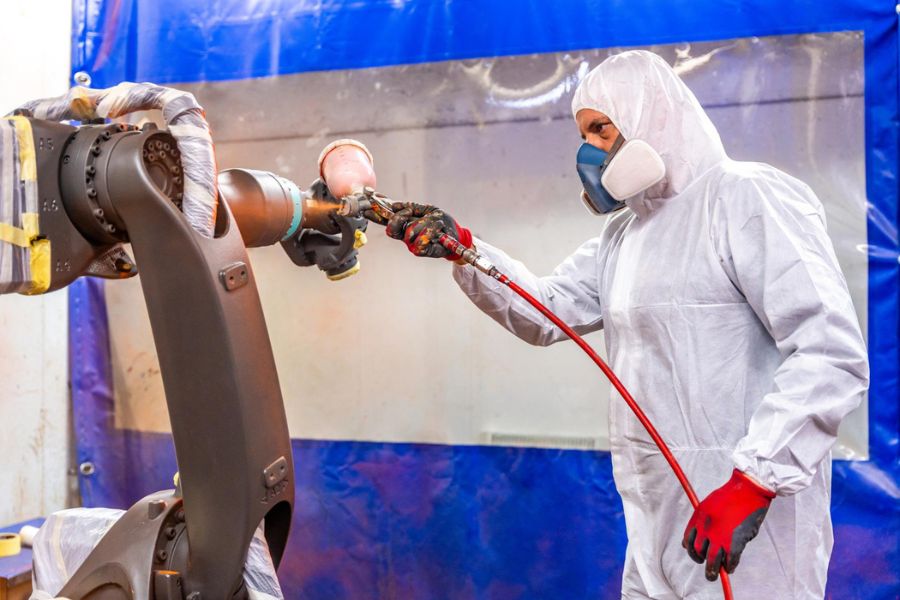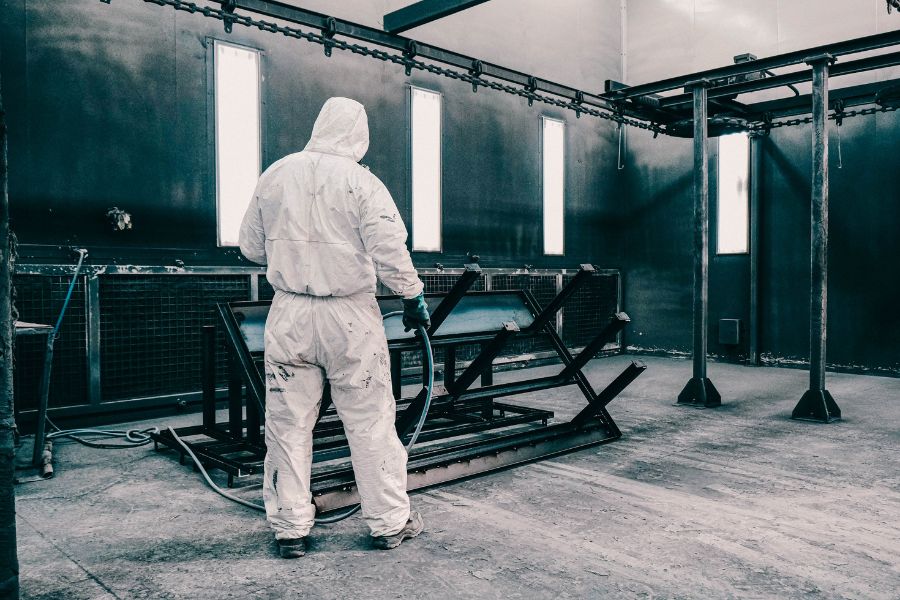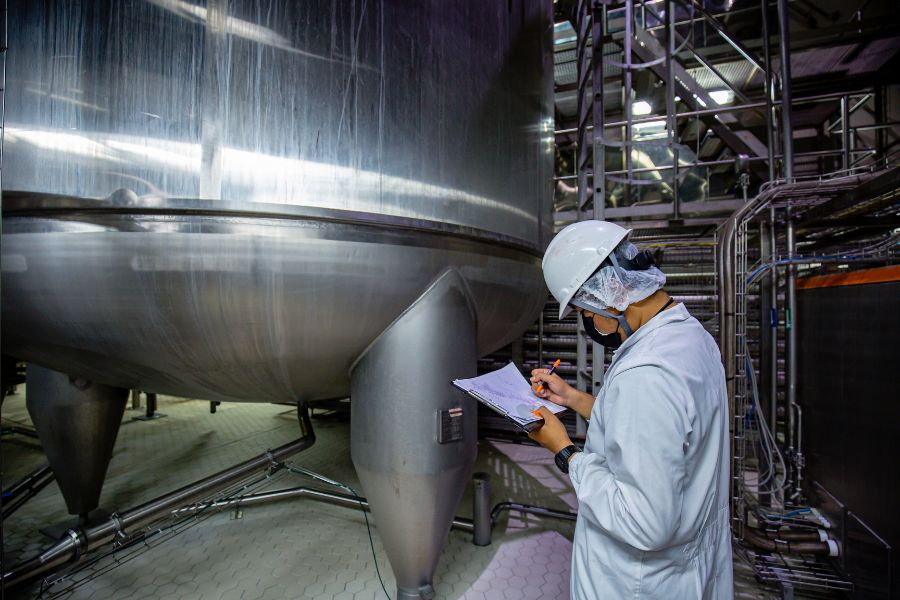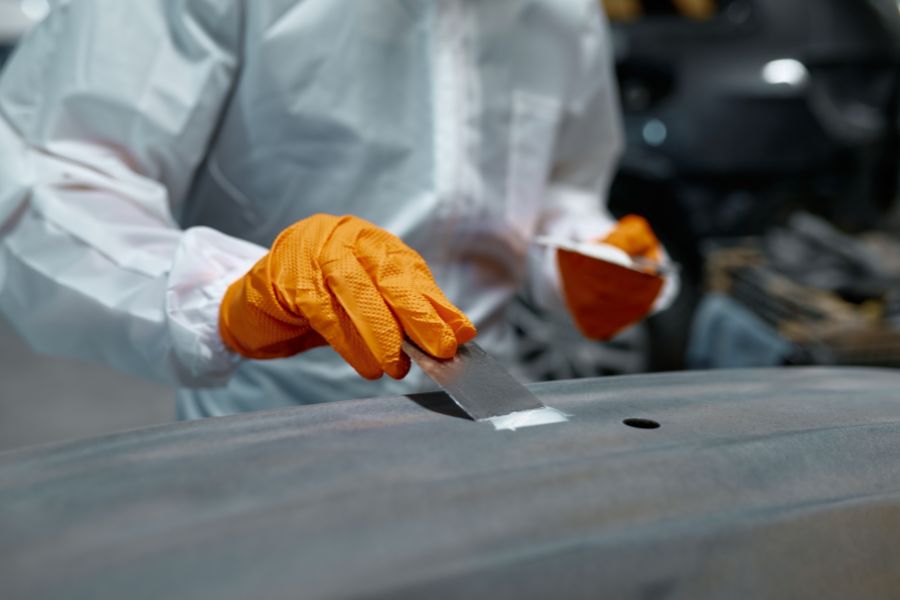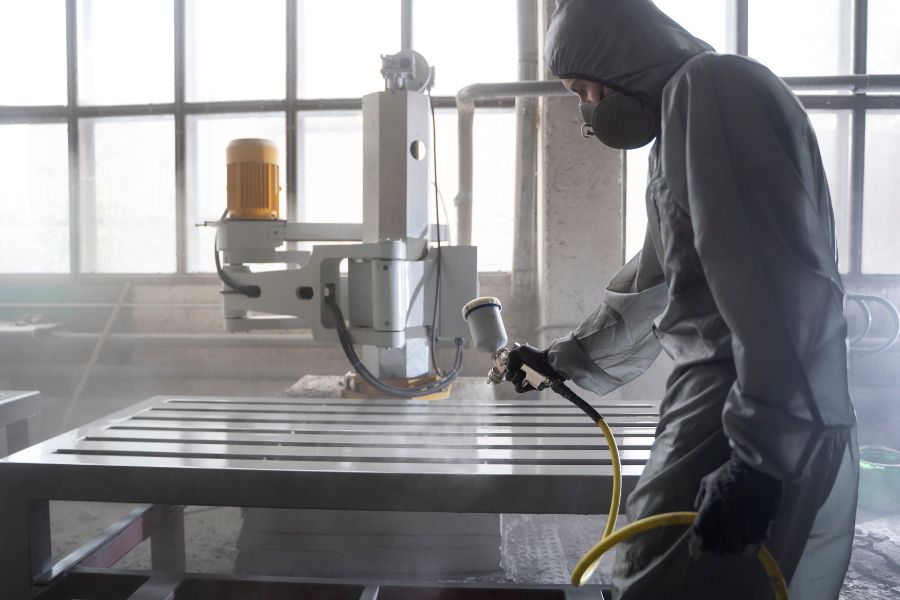Comprehensive Guide to Industrial Coating Inspection: Methods & Importance
In the world of industries, checking coatings carefully is really important to make sure things stay strong, last long, and work well. Industrial coating inspection is a big process that includes lots of different ways to check coatings. It’s like the foundation of making sure things are good quality in industrial places.
A. Definition of Industrial Coating Inspection:
Industrial coating inspection is when we carefully look at coatings that are put on surfaces in industrial places. We check things like how well the coating sticks, how thick it is, what it’s made of, and if it’s good quality. This helps us make sure the coatings meet the rules and plans for projects.
B. Importance of Inspection in Industrial Settings:
- Safety Assurance: When coatings are checked properly, they stop things like rust, wearing away, and damage from chemicals. This keeps things strong and safe.
- Performance Optimization: Checking finds any problems with coatings early, so we can fix them and make sure the coatings work well for a long time.
- Regulatory Compliance: Following the rules and standards for industries is easier when we have strict checking methods. This makes sure things are safe and good for the environment.
Types of Industrial Coatings
Industrial coatings encompass a diverse array of materials tailored to specific applications, environments, and performance requirements. Understanding the various types of coatings is pivotal in selecting the optimal solution for industrial endeavours.
A. Overview of Different Types of Coatings:
- Epoxy Coatings: These coatings are renowned for their resilience and ability to withstand harsh chemicals and abrasion. When industries deal with tough chemicals or environments where surfaces are prone to wear and tear, epoxy coatings step in as a reliable solution.
- Polyurethane Coatings: Among the durable options, polyurethane coatings stand out for their capacity to endure outdoor conditions, including exposure to UV radiation and extreme weather variations. Industries relying on structures or equipment placed outdoors often turn to polyurethane coatings for long-lasting protection.
- Zinc Coatings: Protection against corrosion is paramount in industries exposed to moisture and corrosive elements. Zinc coatings, including galvanized and zinc-rich primers, provide superior defence mechanisms, making them a staple choice for safeguarding structures in such environments.
- Polyester Coatings: Apart from functionality, aesthetics play a crucial role in many industrial applications, especially in architecture and decoration. Polyester coatings not only offer visual appeal but also retain their colour over time, ensuring that industrial assets maintain their attractiveness.
- Fluoropolymer Coatings: In industries where cleanliness and hygiene standards are stringent, such as food processing and pharmaceuticals, fluoropolymer coatings shine. Their exceptional chemical resistance and non-stick properties make them indispensable for maintaining sanitary conditions and preventing contamination.
B. Importance of Selecting the Right Coating:
- Compatibility: Ensuring that the coating adheres well to the substrate material and can withstand the environmental conditions is crucial for its effectiveness.
- Performance Requirements: Each industrial setting comes with specific demands. Whether it’s resistance to chemicals, stability under UV exposure, or the ability to withstand abrasion, understanding these requirements guides the selection process.
- Longevity and Maintenance: Opting for a durable coating not only reduces the frequency of maintenance but also extends the lifespan of industrial assets, ultimately cutting down on long-term operational costs and enhancing overall efficiency.
Importance of Industrial Coating Inspection
Ensuring Quality Control
When we talk about industrial coating inspection, we’re basically making sure that the coatings applied during manufacturing meet really high standards. Inspectors check things like how thick the coating is and how well it sticks to the surface. This helps them catch any problems or differences from what’s supposed to be there, making sure the final product turns out just right.
Preventing Corrosion and Damage
Another big reason why we do industrial coating inspections is to stop corrosion and damage. Imagine if there were tiny holes or cracks in the coating, or if it didn’t cover evenly. Those little issues might not seem like a big deal at first, but they can lead to serious problems later on. By carefully looking over the coating, inspectors can catch these flaws early on and prevent them from causing bigger issues down the line.
Compliance with Safety and Environmental Regulations
Industrial coatings have to follow strict rules to keep everyone safe and protect the environment. Inspections play a crucial role in making sure coatings meet these rules. This helps minimize any risks from dangerous stuff in the coatings and makes sure everything is up to standard with safety and environmental laws.
Methods of Inspection
A. Visual Inspection
Visual inspection forms the cornerstone of Industrial Coating Inspection, offering inspectors immediate insights into the coating surface’s condition. Although it’s limited in detecting defects beneath the surface, visual inspection is vital for spotting visible imperfections like blisters, peeling, or discoloration.
Importance and Limitations: Visual inspection enables inspectors to evaluate coating appearance, uniformity, and adherence to substrate surfaces. However, its effectiveness is confined to surface-level defects. Therefore, it’s essential to supplement visual inspection with more advanced techniques for a thorough evaluation.
Common Defects Detected: Through visual inspection, inspectors can identify a variety of common defects, including blistering, cracking, sagging, pinholes, and inadequate coverage. By promptly spotting these issues, inspectors can take corrective action to prevent further deterioration and ensure coating performance.
B. Non-Destructive Testing (NDT)
Non-destructive testing techniques offer a non-intrusive way to assess coating integrity and detect subsurface defects without harming the coating or underlying substrate. These methods provide significant advantages in terms of efficiency, accuracy, and versatility.
Overview of NDT Techniques: Non-destructive testing encompasses various methods, such as ultrasonic testing, magnetic particle inspection, radiographic testing, and eddy current testing. Each technique employs specific principles and equipment to evaluate different aspects of coating quality, such as thickness, adhesion, and discontinuities.
Advantages and Applications: NDT techniques provide several benefits, including real-time inspection capabilities, portability, and suitability for complex geometries. They find widespread application in industries like aerospace, automotive, oil and gas, and marine for inspecting coatings on diverse substrates, including metals, composites, and concrete.
C. Destructive Testing
Destructive testing entails physically removing or altering a portion of the coating or substrate for detailed analysis. While more invasive than non-destructive methods, destructive testing yields valuable insights into coating performance and substrate condition, especially when non-destructive techniques fall short.
Overview and When It’s Necessary: Destructive testing is typically employed when non-destructive methods are inadequate for accurately assessing coating properties or when precise measurements are essential. It involves sampling techniques like cross-sectional analysis, pull-off testing, and abrasion testing to evaluate coating thickness, adhesion strength, and durability.
Types of Tests: Common destructive tests include adhesion testing, hardness testing, impact testing, and accelerated weathering tests. These tests provide crucial data on coating adhesion, mechanical properties, resistance to environmental factors, and long-term durability, aiding manufacturers and inspectors in informed decisions regarding coating selection and maintenance.
Standards and Rules for Industrial Coating Inspection
Industry Guidelines: In the world of industrial coating, there are specific rules and standards that everyone follows to make sure things are done right. Organization like the National Association of Corrosion Engineers (NACE) (Now Known as AMPP) lay out these rules. They cover everything from what materials to use, how to put them on, and even how to check if they’re good enough. Knowing these rules is super important for inspectors who need to make sure coatings are top-notch.
Following Regulations: But it’s not just about those industry standards. Governments also set rules at different levels, both local and international. These rules say what coatings can be made of, how they should be put on, and even what’s okay for the environment and safety. Inspectors have to keep up with all these rules to make sure the coatings they’re checking meet every requirement.
Best Practices
Pre-inspection Preparation: Before diving into the inspection process, it’s crucial to get everything ready. This means thoroughly reviewing the project specs, checking out the environmental conditions, and making sure the folks involved in the coating process are qualified. Plus, you want to double-check that all the necessary equipment, like inspection tools and safety gear, is good to go. Proper preparation sets the stage for a smooth and effective inspection process for Industrial Coating Inspection.
Documentation and Reporting: Keeping accurate records is key. Inspectors need to diligently jot down important info like how surfaces were prepped, details about the coating application, and what they find during inspections. These detailed reports are essential for showing that everything’s up to snuff with standards and regulations. Plus, they help keep everyone involved in the project on the same page. Good documentation is like a roadmap for future inspections and maintenance work, making life easier down the line for Industrial Coating Inspection.
Maintenance and Follow-up Inspections: Coated surfaces need some TLC to stay in tip-top shape over time. Follow-up inspections are crucial for keeping tabs on how things are holding up. By sticking to a regular schedule for check-ups, inspectors can catch any issues early on and take care of them before they become big problems. This might mean doing spot repairs or applying a fresh coat of paint. These maintenance interventions help prevent corrosion and keep coated assets in good condition, ensuring they last for as long as possible in Industrial Coating Inspection.
Case Studies
Industrial coating inspection is a critical aspect of ensuring the durability, performance, and safety of various structures, equipment, and facilities across industries. Through case studies, we can delve into real-world examples that highlight the significance of meticulous coating inspection practices, unveil challenges faced, and present the lessons learned along with best practices demonstrated.
A. Offshore Oil Rig Platform Coating Inspection
Case Overview
In the harsh marine environment, offshore oil rig platforms face constant exposure to corrosive elements such as saltwater, leading to rapid degradation if not adequately protected. A case study focusing on the industrial coating inspection of an offshore oil rig platform illustrates the importance of rigorous inspection protocols in maintaining structural integrity and preventing catastrophic failures.
Lessons Learned
The necessity of employing specialized coating systems designed for marine environments.
Regular inspection intervals are essential for early detection of coating defects and corrosion.
Collaborative efforts between coating inspectors, engineers, and maintenance personnel are crucial for effective maintenance strategies.
Best Practices Demonstrated
Utilization of advanced non-destructive testing (NDT) techniques such as ultrasonic thickness measurement and magnetic particle inspection.
Implementation of coating condition assessment criteria to categorize defects and prioritize maintenance activities.
Integration of digital reporting systems for streamlined data management and trend analysis.
B. Automotive Manufacturing Plant Coating Inspection
Case Overview
Automotive manufacturing plants rely on protective coatings to safeguard equipment and infrastructure from wear, chemical exposure, and environmental degradation. A case study examining the coating inspection process in an automotive manufacturing plant showcases how proactive inspection practices contribute to prolonged asset lifespan and operational efficiency.
Lessons Learned
Tailoring coating specifications to match specific operating conditions and performance requirements.
Continuous monitoring of coating performance through regular inspections and condition assessments.
Timely repair and maintenance of coating defects to prevent production downtime and costly repairs.
Best Practices Demonstrated
Implementation of in-house coating inspection programs with trained personnel and standardized inspection procedures.
Adoption of digital documentation systems for tracking coating maintenance history and scheduling routine inspections.
Collaboration with coating manufacturers and suppliers to stay updated on technological advancements and best practices in coating application and inspection.
FAQs: Frequently Asked Questions
What is industrial coating inspection?
Industrial coating inspection involves evaluating and assessing the quality and integrity of protective coatings applied to industrial equipment and structures. This process ensures that coatings are free from defects and are capable of providing the intended protection against corrosion, chemical damage, and environmental degradation
Why is industrial coating inspection important?
Industrial coating inspection is crucial for maintaining the performance and durability of protective coatings. It helps detect defects such as pinholes, cracks, and uneven thicknesses, which can compromise the coating's effectiveness. Proper inspection ensures quality control, prevents costly repairs, and extends the lifespan of coated equipment and structures.
What are the key standards and regulations for industrial coating inspection?
Key standards and regulations are provided by organizations such as ASTM International and NACE International. These standards outline best practices for surface preparation, coating application, and inspection procedures, ensuring consistency and quality across different industries and applications.
What methods are used for industrial coating inspection?
Several methods are used for industrial coating inspection, including:
- Visual Inspection: Examines the coated surface for visible defects.
- Non-Destructive Testing (NDT): Techniques such as ultrasonic testing, magnetic particle inspection, and eddy current testing to detect subsurface defects.
- Destructive Testing: Involves removing samples for detailed analysis, such as adhesion testing and hardness testing.
What are some best practices for industrial coating inspection?
Best practices for industrial coating inspection include:
- Thorough pre-inspection preparation
- Proper documentation of inspection findings
- Regular maintenance and follow-up inspections
- Adherence to industry standards and regulations
- Use of appropriate inspection methods and tools
Closing Insights
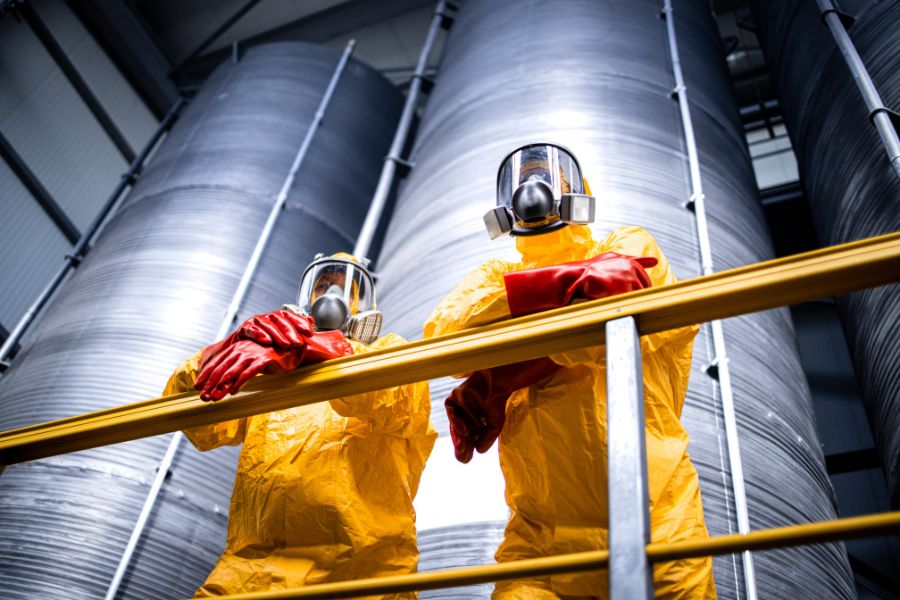
At CORCON – Institute of Corrosion, we recognize the critical role that industrial coating inspection plays in safeguarding assets across diverse sectors. Through meticulous visual inspections, non-destructive testing techniques, and strict adherence to industry standards, companies can fortify the durability and effectiveness of their protective coatings, mitigating the threat of corrosion-induced breakdowns.
Moreover, with our comprehensive NACE (Now Known as AMPP) Coating Inspector Programs, professionals are equipped with the expertise to uphold these standards effectively. As technological innovations continue to emerge, we anticipate a future where industrial coating inspection evolves to offer even greater precision, efficiency, and cost-effectiveness.
Image Reference: Freepik
Disclaimer: All trademarks, logos, and brand names are the property of their respective owners. All company, product, and service names used in this website are for identification purposes only. Use of these names, trademarks, and brands does not imply endorsement.
